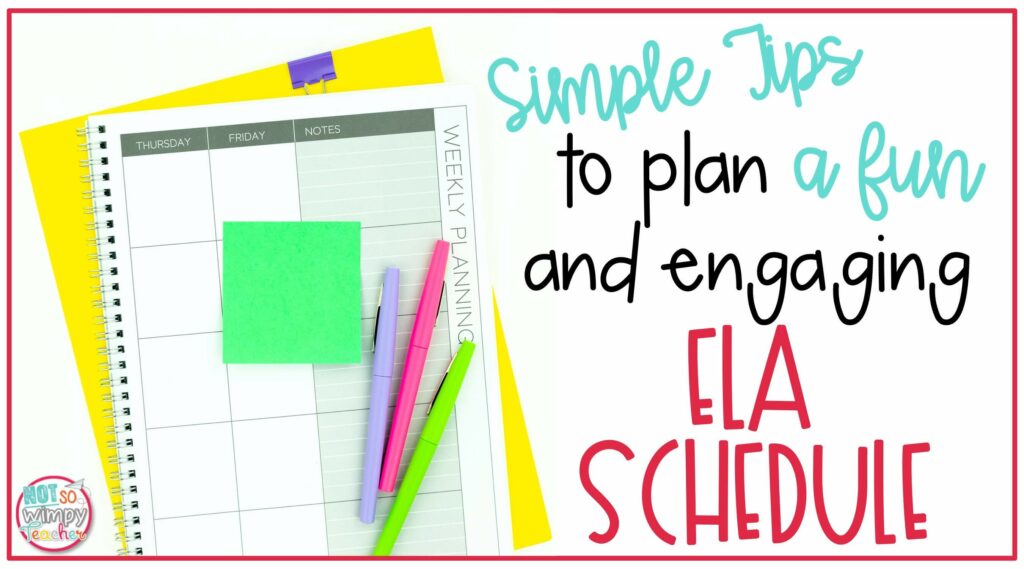
One of the most difficult tasks of any new year school year is planning your classroom schedule. Creating a schedule that fits all the core subjects, specials, push-ins and pull-outs, school initiatives (like character education), lunch, and recess, and still has a little bit of flex time built in for fun activities, classroom birthdays, and things that pop-up is like trying to solve a Rubik’s cube, blindfolded. Even your ELA schedule requires coordinating a bunch of different subjects.
It’s not surprising, then, that some of the most common questions I get from teachers who have purchased some or, in many cases, all of my ELA resources (#thankyou), is how to make them work together.
Today, I am going to show you some different ways to fit everything into your ELA schedule. I’ll share some sample schedules and practical suggestions on how you can use all of my resources together for one comprehensive language arts block that doesn’t take all day.
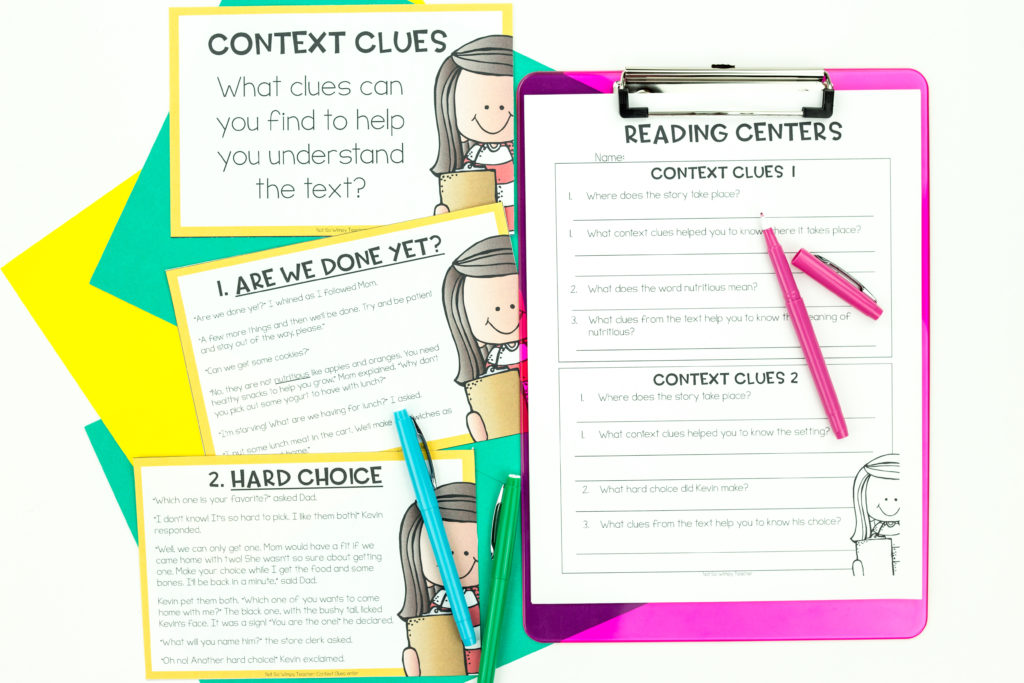
A few caveats:
I know that everyone has a different school schedule. Your school days begin and end at different times. You have different amounts of time allotted for specials and lunch breaks. You have to account for push-ins and pull-outs and have to teach different required subjects.
Some of you have one big chunk of time for your ELA schedule. And others have it broken up with a special in the middle. Some of you have a lot of flexibility in how you use your time during the day and others have to follow a rigid grade-level schedule.
Some of you must use your school’s basal reading curriculum for language arts (I’m sorry). But keep reading anyway, you can pick up some valuable tips on how to keep lessons short, focus on one small thing each day, supplement your vocabulary instruction, and make the most of what you do have.
Planning Your ELA Schedule
Ideally, you will have at least two hours for ELA most days of the week. Now, before you start hyperventilating, please know that you do not need to have that time all at once. Many teachers do like to run through their entire ELA routine at one time and are lucky enough to have a schedule that allows them to do so. But it is not necessary. I designed my curriculum so that you don’t have to teach everything all at once. Some teachers even prefer breaking up their language arts instruction throughout the day.
Your ELA block should have six components: whole group reading, reading centers, grammar or language, vocabulary, spelling, and writing. I believe it is important to explicitly teach ALL of these subjects (although you do not have to teach all of them every day), and I have created lots of resources that make it easy to do so.
I realize that in reality most of you will not have an ideal schedule. You probably don’t have 2+ hours for ELA. Don’t worry. There are lots of creative ways to make a shorter ELA schedule work for you and your students. Let’s take a look at three different schedules and talk about how to make the most of them.
Sample ELA Schedules
Remember, these are only three examples of what a school day might look like. None of these schedules is perfect. Your schedule probably does not look exactly like any of these. But hopefully, they can offer some inspiration for how you might arrange your day.
Each schedule starts at 8:00 am and ends between 2:00 – 2:40. I know there is a lot of variability in the length of school days so I wanted to take this into account.
Schedule 1
The first schedule shows an example of a classroom where the entire ELA block is in the morning. A restroom break and snack break up the block. In this schedule, and the two below, whole group reading instruction occurs during snack. This allows you to use snack time productively. Vocabulary is taught in the few minutes between special and lunch. This is the longest school day so it has the longest amount of time devoted to reading centers, writing workshop, and math workshop.
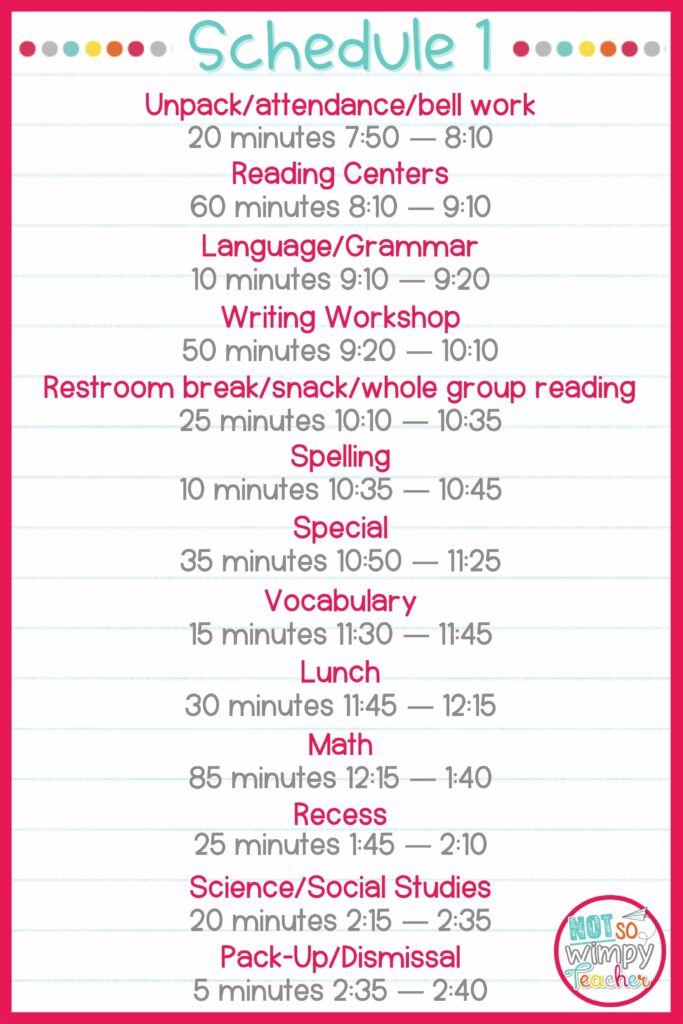
This would be considered an “ideal” schedule. There are large blocks of time for ELA and math. But you can easily reduce reading centers to 40 or 50 minutes, writing workshop to 30 minutes, or math to 60 or 70 minutes if necessary.
This schedule assumes that you teach either social studies or science in the afternoon. You don’t have to squeeze them both into twenty minutes. You could alternate subjects by day of the week, by unit, or by quarter.
If you find that twenty minutes isn’t enough time for science and social studies, you can adjust your ELA schedule to free up some time. You could reduce reading centers from 60 minutes to 40 minutes. This would give an extra twenty minutes in the morning. When you add that twenty minutes to the time allotted for spelling, you have a thirty-minute block. Maybe you could move recess to the morning, which would give you more time for science or social studies. You’d still be able to get in a quick spelling lesson in the afternoon.
Or, if you can’t control the times of special, lunch, and recess, you could teach science or social studies in the morning during that 30-minute block, and move spelling or vocabulary to the afternoon.
Schedule 2
This second schedule shows an example of a divided ELA block. Reading, grammar, vocabulary, and spelling are in the morning, and writing workshop is after lunch. This school day runs from 8:00 – 2:30, so it is a little bit shorter than the first schedule. But there is still plenty of time for reading centers and writing workshop.
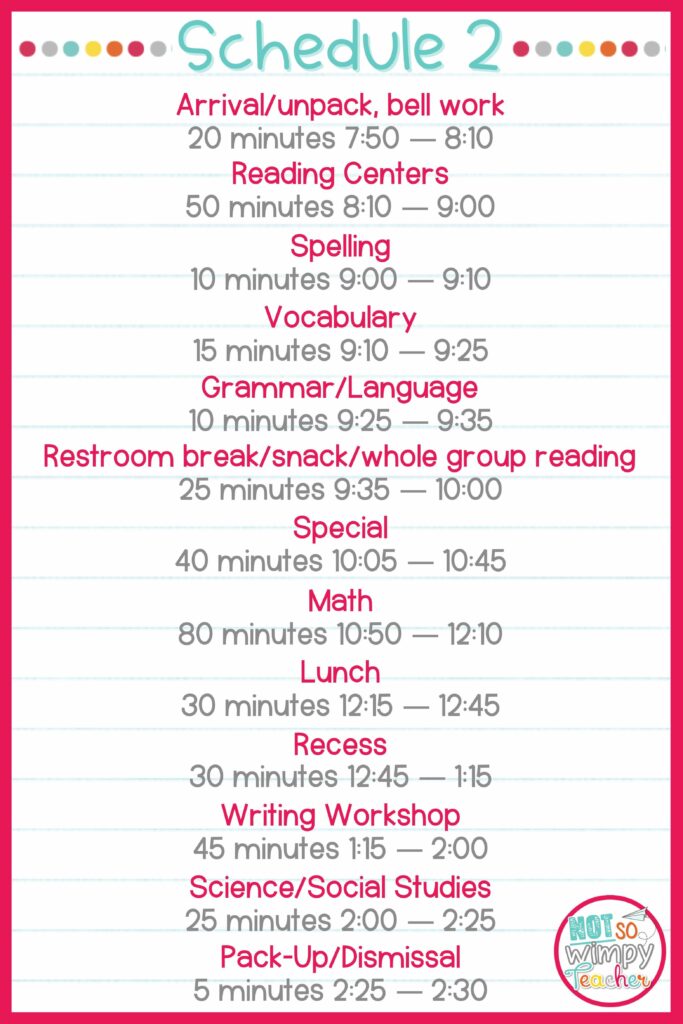
This schedule also shows an ideal set-up for reading centers, math, and writing workshop.
If you have a longer special or lunch or another subject that you have to fit into your day you can adjust this schedule to accommodate that. One solution is to teach grammar and spelling on alternate days. You can always use some of the activities as bell work.
Another option is to reduce the amount of time you spend teaching reading, writing, or math. Try making reading centers 40 minutes instead of 50 minutes. If you see two guided reading groups per day you will still have twenty minutes with each of them. You can accomplish a lot in that time. You could also make writing workshop 35 minutes instead of 45 minutes. If you keep your mini lessons short your students will still get 20 minutes to write each day.
Also, remember that there are opportunities for students to read and write throughout the school day. Don’t be afraid to point out a reading strategy in social studies or highlight a vocabulary word in math. Integrating reading and writing throughout the curriculum helps students understand and apply the skills they are learning.
Schedule 3
This third schedule provides an example of a day that does not start with ELA. In this schedule, the math block is first. The rest of the day is devoted to ELA with breaks for lunch, specials, and recess.
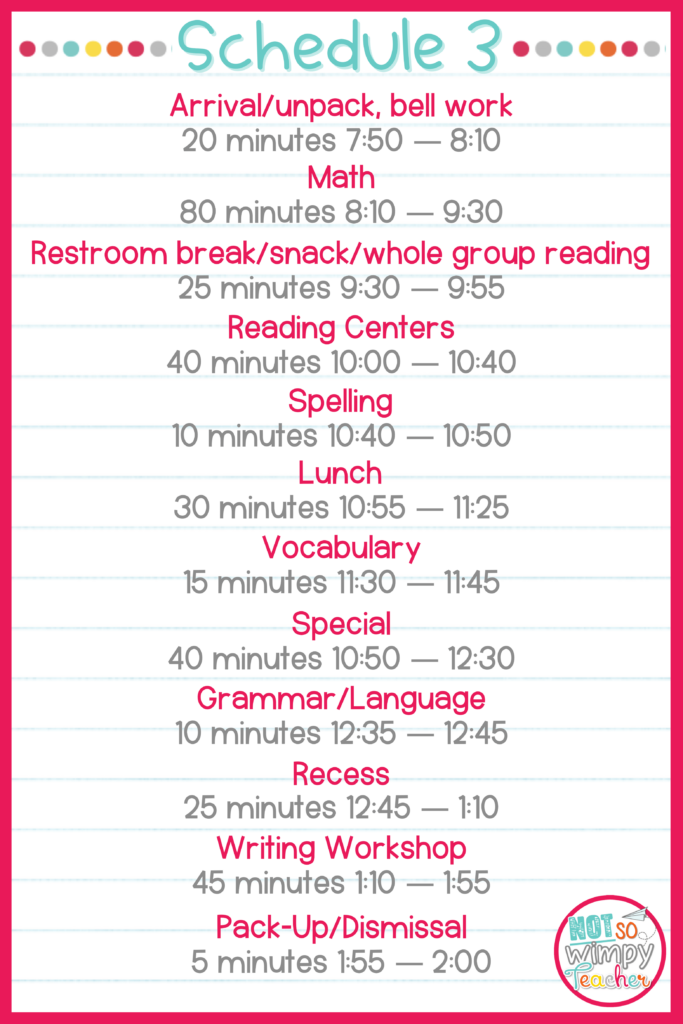
You will notice this schedule does not include science and social studies every day. Don’t worry, we aren’t ignoring those subjects. But since this schedule has the shortest school day, I’ve modeled it after the way I used to teach. I devoted Monday through Thursday to ELA and math. On Fridays, we did assessments, celebrations, social studies, and science. You can read more about my schedule here.
Many of my resources are based on a five-day week, so in order to fit them into a four-day week, you will have to make some modifications. You can either combine lessons, skip a day, or assign an activity for bell work or homework.
In vocabulary, I recommend that you do not skip the WOW word day. This activity provides important word study and language analysis. But you could have students draw pictures (Thursday’s activity) as morning work.
For grammar, it’s easiest to skip the writing activity (Wednesday), because you will be teaching writing workshop anyway. You can also use this brief writing task as morning work or homework.
Getting Started with Your ELA Schedule
Teachers often ask me if they should introduce all the ELA subjects at once. And if not, in which order they should introduce them.
I am a firm believer that during the first two weeks of school you should focus on teaching classroom procedures rather than academic content. The time you take at the beginning of the year to make sure your students understand expectations will save you valuable time later.
I would not introduce reading, grammar, vocabulary, writing, and spelling on the first day of school. Nor would I introduce all these subjects on the same day. I recommend introducing these subjects over the first couple of weeks of school when your students have demonstrated that they understand your classroom routines.
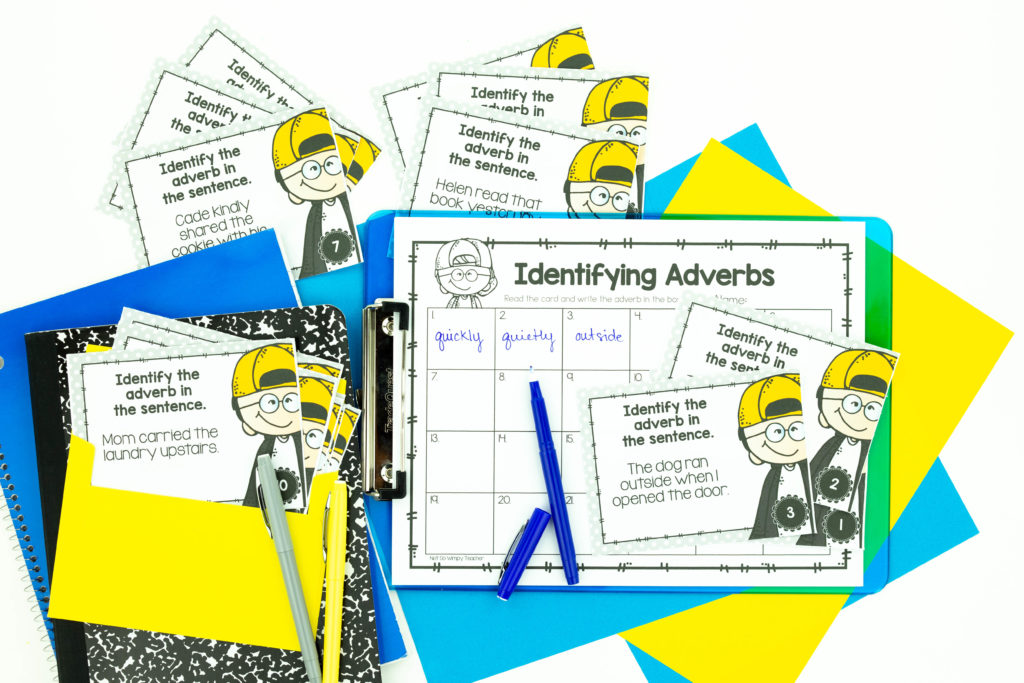
Writing Workshop
I’m a big proponent of writing workshop, and writing was always one of the first subjects I introduced to my class.
I recommend that you do the same. But don’t jump right into one of the writing units. Rather, start with a series of mini lessons that set students up for success. Begin by focusing on the routines and procedures you need for writing workshop. Then do a pre-assessment and start building writing stamina. Only after students have demonstrated that they can write independently for about twenty to thirty minutes should you start the writing units.
Check out this post for more information on how I get writing workshop started at the beginning of the year.
Shop This Post
Whole Group Reading
Another subject I recommend beginning right away is whole-group reading instruction. I used read alouds to teach reading skills to my students. Chapter books are much more interesting than basal readers and good stories keep kids engaged. You can read more about how I use read alouds to teach reading standards here.
At the beginning of the year, I would choose texts that focus on community, friendship, kindness, inclusivity, growth mindset, and manners. These texts allow you to teach important social skills along with reading skills.
This method also allows you to teach reading during snack time, so you can make productive use of otherwise wasted time.
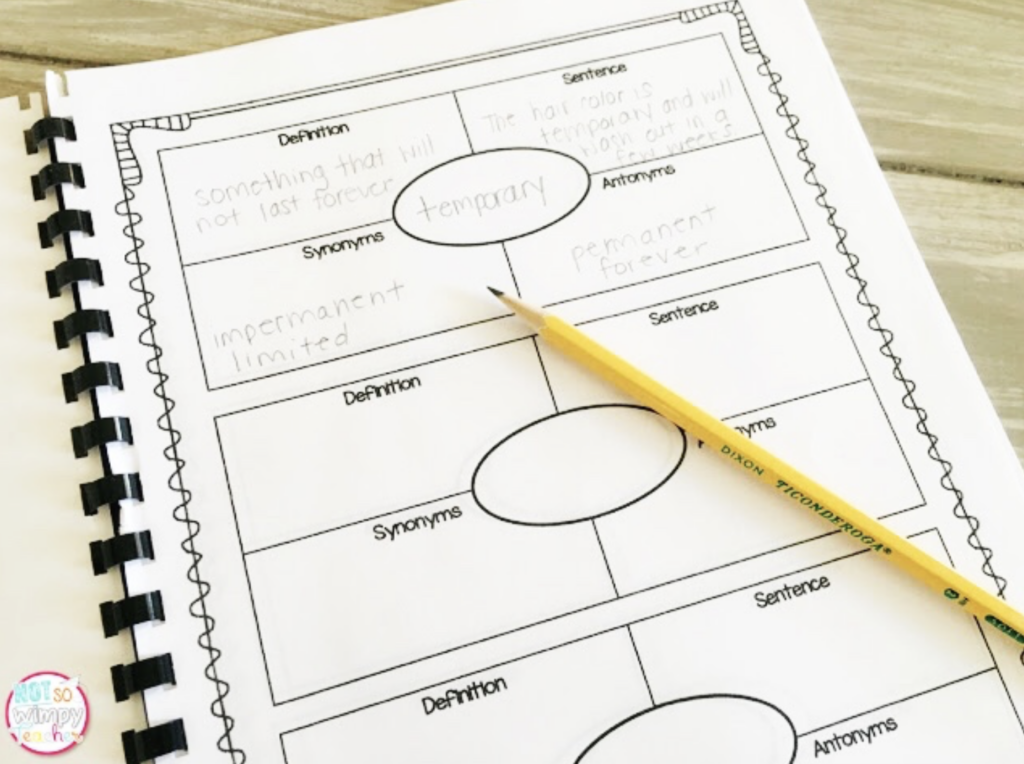
Grammar & Vocabulary
My grammar units and vocabulary lessons are both stand-alone activities. Each lesson only takes 10-15 minutes each day. Grammar lessons are based on grade-level standards and my vocabulary units focus on tier-2 words, high-frequency words that appear in grade-level texts. These vocabulary lessons make a great addition to any reading curriculum.
Both grammar and vocabulary are based on a five-day schedule. If you have a five-day classroom schedule, I would introduce these units on a Monday. It will make it easier for students to learn the routine.
You can introduce grammar and vocabulary in the same week. Both subjects have short lessons and each day has one activity. The routines are simple and easy to follow.
You don’t even have to teach these subjects during your ELA block. You can sneak them in anytime you have an extra ten minutes. Maybe it’s after special and before lunch, or right before recess. Using these hidden pockets of time helps make the most of your school day.
Shop This Post
Shop This Post
Reading Centers
I would wait a couple of weeks to introduce reading centers. The key to making centers work is practice and consistency. Your first lessons should teach students how to behave during reading centers.
- Show students what to do during centers while they watch.
- Brainstorm what it should look and sound like during center time.
- Have students model what NOT to do during centers and then have them go back and correct it.
- Have students show you how to do centers correctly.
It’s also helpful to only introduce one center at a time. This sets kids up for success by ensuring they understand one activity before learning a new one. Although it takes a little bit of time to introduce all the centers, once you’ve done it, you are good for the entire year.
You can read more about how to manage reading centers here.
Shop This Post
Spelling
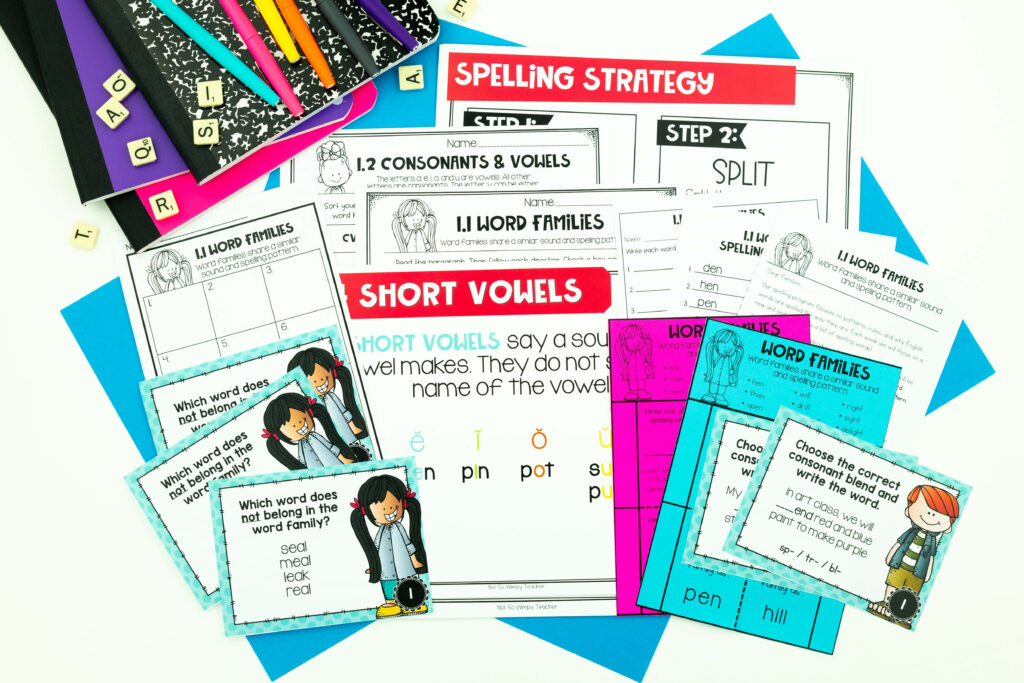
I have spelling curriculum for second grade, third grade and fourth & fifth grade. Our spelling program takes a unique skills-based approach to teaching spelling. Instead of asking students to memorize random lists of words each week, we focus on teaching students spelling rules and patterns. When they understand “the why” behind words are spelled the way they are, they can apply those rules to tons of new words that were never on a spelling list.
This spelling curriculum is flexible, easy to differentiate, and simple to use. It is designed to increase students’ understanding of common spelling rules and patterns. The growing bundle includes an entire year’s worth of fun and engaging spelling lessons. (A growing bundle means the entire bundle is not yet complete. When you purchase the growing bundle now, at a discount, you’ll get the currently available units right away. You’ll also get access to new units as they are released at no additional chagre).
This curriculum is also easy to tailor to your unique classroom needs. You can teach it in just two days a a week. Each week includes 4 different spelling lists, interactive notebook activities, task cards, practice sheets, homework, and assessments. You can choose the lists and activities that work best for your students.
Read more about the spelling curriculum here.
Want to see for yourself? You can check out a FREE WEEK of our SECOND GRADE, THIRD GRADE or FOURTH & FIFTH GRADE SPELLING CURRICULUM!
Shop This Post
You don’t need more than 10-15 minutes a day to teach spelling. Many teachers must use a specific spelling list. I know this is not ideal. If you do have some flexibility, you might consider choosing words that follow a phonics pattern you are teaching in reading, selecting words from a grade-level spelling list, or generating individual spelling lists based on words or patterns students struggle with.
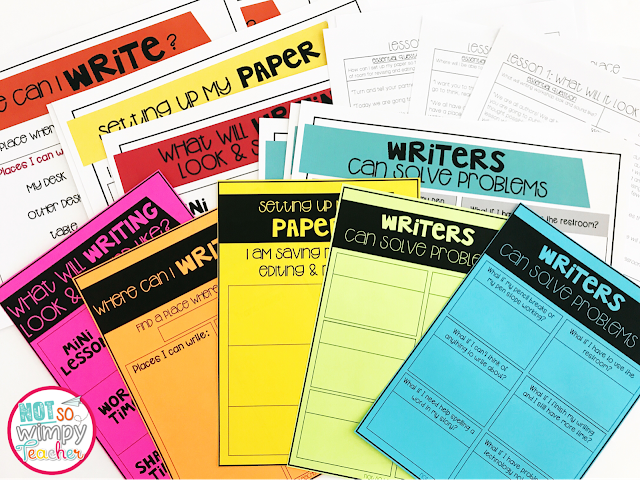
I hope this gives you some ideas on how to fit everything into a fun and engaging ELA schedule.
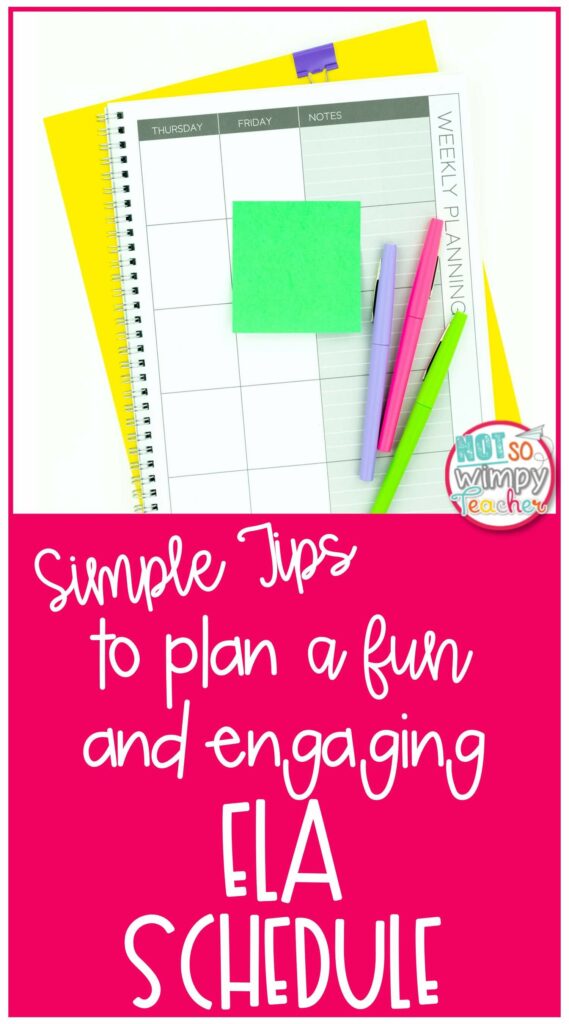
Have a Not So Wimpy Day,






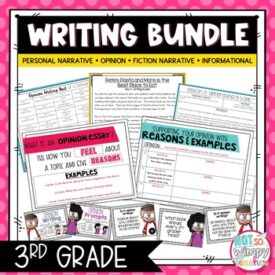

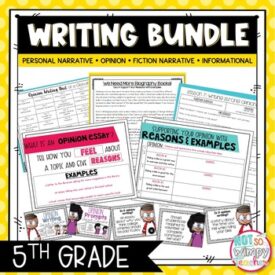
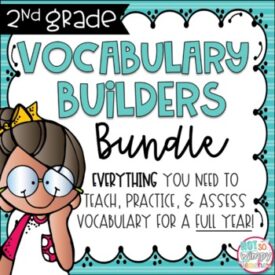
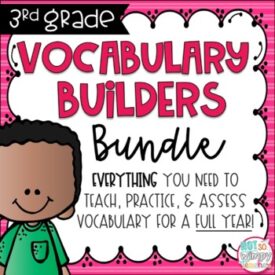
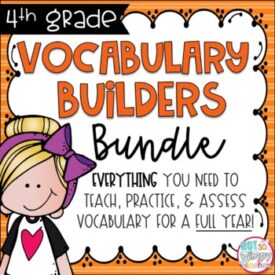
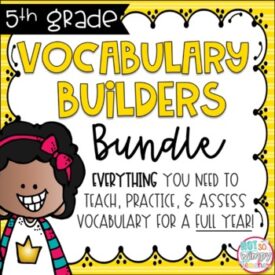
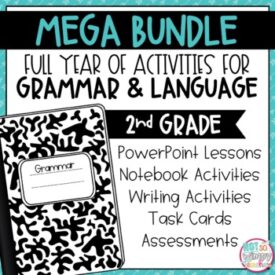
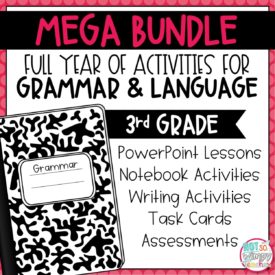
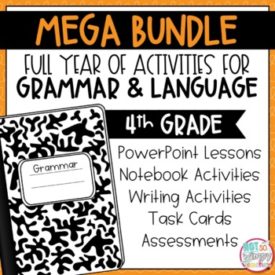
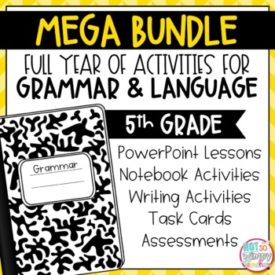
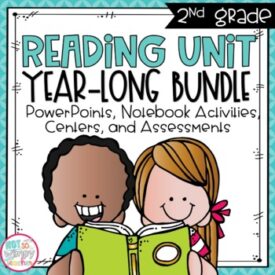
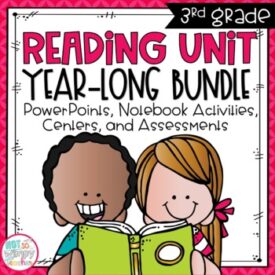
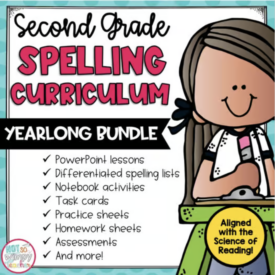
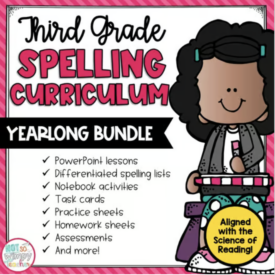




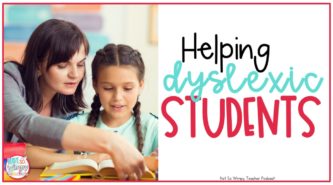











 End of Year Carnival Week for grades 2-5!
End of Year Carnival Week for grades 2-5!
Leave a Comment